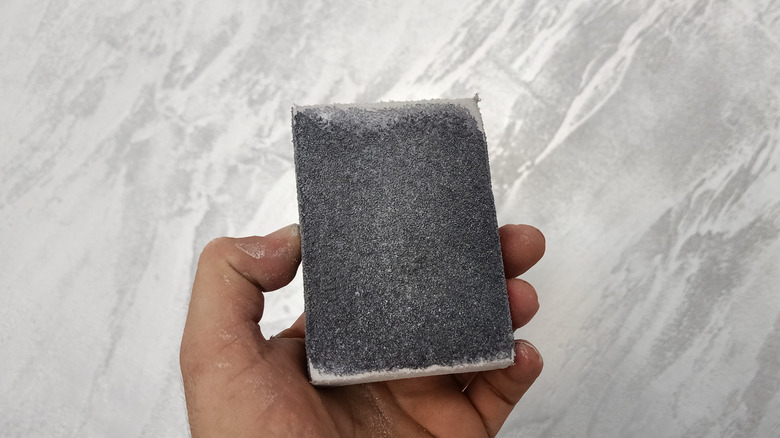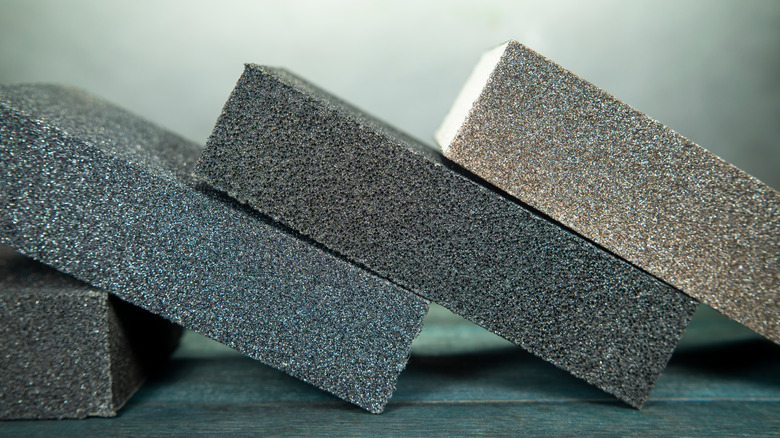Keep Your Sanding Sponge Like New With These Cleaning Tips
A sanding sponge is a useful tool to have around, helping you smooth surfaces while offering extra advantages over conventional sandpaper. It works well for sanding drywall, scrubbing corners, and for smoothing various objects and features in the home. You can also use it for DIY projects, such as fixing nicks on your coffee table or sanding your deck the correct way. A sanding sponge can be used either wet or dry and provides dust-free usage while offering better functionality on uneven surfaces and corners. However, as a sanding sponge smooths a surface and removes dirt, dust, and grime, it can become soiled itself. Cleaning a sanding sponge properly allows you to reuse it multiple times and ensures you get the most out of it.
The first step to cleaning a sanding sponge is to get rid of any dust that's on it. You'll want to vigorously shake the dust into your trash can and use your fingers to remove as much as you can. Having a budget-friendly air compressor in your garage is a great idea, and can also be used to help remove this dust. Next, you can proceed to wash the sponge to remove the dirt and grime that remains. If the sponge isn't too dirty, you can simply spray it with water or run it under your faucet. However, it's best to submerge the sponge in water completely if it has been used heavily. Adding a few drops of a mild detergent or soap to the water can be even more effective. Afterward, you can wring out the water and let the sponge air dry or sit in the sun before using it again.
More to consider when cleaning sanding sponges
Although cleaning sanding sponges is pretty straightforward, there are some additional things to keep in mind to avoid damage and accelerating the need for a replacement. One of the main things to remember is that you shouldn't boil or microwave it to clean it. This is often recommended as a solution, but it doesn't actually work and can cause more bacteria to grow on it instead. Also, remember that you can reuse the sponge longer than you might expect, but it will get worn out eventually. If most of the texture and grit is gone, it will no longer be effective and should be thrown out.
While cleaning and reusing sanding sponges is helpful, you'll get the most out of them if you ensure you have the right ones in the first place. You may want to buy a few different sanding sponges first. Different sponge grits work better for different projects, and sometimes a sponge with finer grit may be needed. Brands vary as well, and while companies such as 3M and Norton make great sanding sponges, your preference may vary based on your needs and project requirements. Choosing the right sponge for your needs will help you get more use out of it; just be sure to clean it properly.

